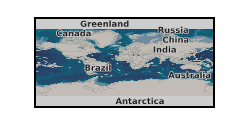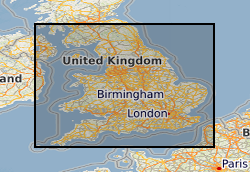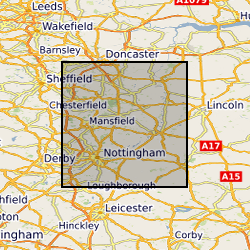irregular
Type of resources
Available actions
Topics
Keywords
Contact for the resource
Provided by
Years
Formats
Representation types
Update frequencies
Service types
Scale
Resolution
-

Microfossil samples submitted to the BGS are currently registered using the prefix 'MPA'. Samples include rock, residues from sample preparations, and slides of mounted specimens. Rock, residues and slides from the same sample all bear the same unique identifying sample number. The numbers MPA 1 to 51000 have been used, but this grows steadily. There are currently 21 volumes of registered samples.
-

A card index storing supplementary information regarding name, operator, dates and commodity worked for each planning permission boundary recorded (drawn) on the Ministry of Housing and Local Government (MHLG) Mineral Planning Permissions Maps (see associated metadata). Information on the cards has been used to attribute the Ministry of Housing and Local Government (MHLG) Mineral Planning Permission Polygons (see associated metadata for MHLG Planning Permission Polygons).
-

GIS Data Layer and Database including maps and detailed Indexes. Paper records and photographs, descriptive register is paper version from which the digital version was created. Data mainly captured in 1989, infrequent additions (approximately 1 entry per year) since then. Includes all man-made caves known to BGS in Nottingham, but there are many more to be located in the future.
-
The Intergovernmental Panel on Climate Change (IPCC) Data Distribution Centre provides four main types of data and guidance: 1. Observed Climate Data Sets; 2. Global Climate Model Data; 3. Socio-economic data and scenarios; 4. Data and scenarios for other environmental changes.
-
The Intergovernmental Panel on Climate Change (IPCC) Data Distribution Centre provides four main types of data and guidance: 1. Observed Climate Data Sets; 2. Global Climate Model Data; 3. Socio-economic data and scenarios; 4. Data and scenarios for other environmental changes.
-
Global Coordination of Atmospheric Electricity Measurements (GloCAEM) project brought these experts together to make the first steps towards an effective global network for FW atmospheric electricity monitoring by holding workshops to discuss measurement practises and instrumentation, as well as establish recording and archiving procedures to archive electric field data in a standardised, easily accessible format, then by creating a central data repository. This project was funded in the UK under NERC grant NE/N013689/1. This dataset contains measurements of atmospheric electricity and electric potential gradient made using a Cambell Scientific CS110 electric-field mill at the University of Reading.
-
The Intergovernmental Panel on Climate Change (IPCC) Data Distribution Centre provides four main types of data and guidance: 1. Observed Climate Data Sets; 2. Global Climate Model Data; 3. Socio-economic data and scenarios; 4. Data and scenarios for other environmental changes.
-
The Intergovernmental Panel on Climate Change (IPCC) Data Distribution Centre provides four main types of data and guidance: 1. Observed Climate Data Sets; 2. Global Climate Model Data; 3. Socio-economic data and scenarios; 4. Data and scenarios for other environmental changes.
-
The Intergovernmental Panel on Climate Change (IPCC) Data Distribution Centre provides four main types of data and guidance: 1. Observed Climate Data Sets; 2. Global Climate Model Data; 3. Socio-economic data and scenarios; 4. Data and scenarios for other environmental changes.
-
Global Coordination of Atmospheric Electricity Measurements (GloCAEM) project brought these experts together to make the first steps towards an effective global network for FW atmospheric electricity monitoring by holding workshops to discuss measurement practises and instrumentation, as well as establish recording and archiving procedures to archive electric field data in a standardised, easily accessible format, then by creating a central data repository. This project was funded in the UK under NERC grant NE/N013689/1. This dataset contains measurements of atmospheric electricity and electric potential gradient made using a Cambell Scientific CS110 electric-field mill at Thrace Xanthi.
 NERC Data Catalogue Service
NERC Data Catalogue Service